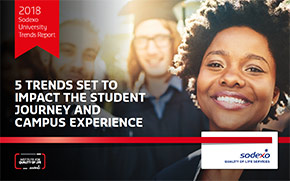Understanding US students’ quality of life needs

Senior Associate Vice President,
University Services,
Tulane University, USA
We are embarking on a new era in higher education, one that will bring with it substantial changes in how we educate and how we operate. Global trends are having a significant impact on the academic, business, economic and political landscape in which universities must function. To remain relevant, institutions will have to rethink conventional education structures and services.
One of the biggest findings from the International University Lifestyle Survey was how concerned students are about their mounting financial debt. Not only are they apprehensive about student loans and other financial liability, but they also indicated growing concern over securing a job after graduation that will allow them to pay back their obligations while maintaining a good quality of life.
Attending college is one of the first big decisions a young person makes and it is likely one of the most significant financial commitments of their lifetime. As universities look for new and innovative ways to recruit, they may be overlooking a very simple source of inspiration – making a strong first impression. According to the Survey, 43 percent of U.S. students make their decision on where to attend college based largely on their first impression of the physical campus environment. Combine this with the fact 83 percent of students believe that a friendly campus atmosphere is more important that a university’s reputation. Institutions of higher education can take advantage of this by being very prescriptive about the look and feel of their campus. Are the grounds meticulously maintained? Are maintenance issues addressed swiftly? Are the common-areas spotless?
While an impeccable physical environment may win students over, a robust and forward thinking learning environment keeps them engaged and on track. Academic institutions need to embrace flexibility and be open to different learning models in order to engage a wider variety of students.
In our technology-focused world, mastering that art of collaboration is key to problem solving in business and academia. The Survey found that 86 percent of U.S. students study independently in their rooms, a direct contrast to the rest of the world. Universities have an opportunity and a responsibility to cultivate collaboration, from the way they design their learning spaces to rethinking traditional gathering areas such as libraries, study halls and courtyards.
Ensuring student support services such as tutoring, mental health counseling, and academic advising, can all help students get more out of their college experience.
But universities need to show evidence that they are committed to their students’ future with an empowered and pro-active career services department. From deep-seated internship programs to job-fairs and work study programs, universities must get in the business of securing job opportunities for their students.
In our increasing global world, academic institutions can no longer operate in a vacuum. For students to be successful, academia needs to be open to partnering with and learning from the private sector, the community and the students themselves.



